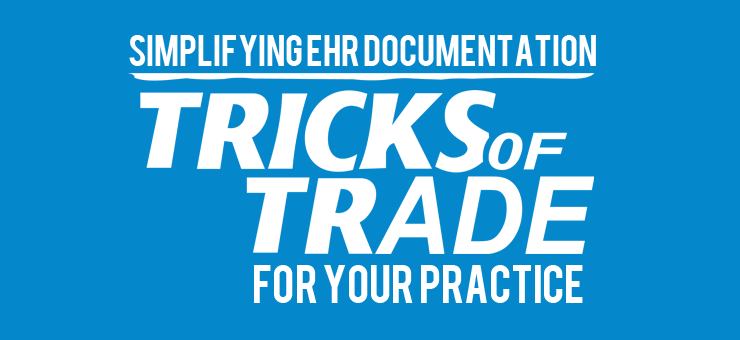Although it was technology that took man to the moon, it was man himself who invented that technology. Man built the machines; devised the mechanisms, and hence, landed on the moon. You are the Neil Armstrong of your practice, to reach the moon (achieve your goals), you need to take control of Apollo 11’s machines (EHR systems), just as he did in 1969. Merely possessing the technology will not take you anywhere; to enjoy the benefits it offers, you must learn to use it effectively.
The towering piles of paper, that once inundated your practice, might have been replaced by a sleek new computer, a handy tablet or something similar, but that’s only one part of the job. Without optimum usage the computer and the Electronic Health Record (EHR) system it supports may actually slow you down.
Here’s what you need to do to simplify and expedite EHR documentation at your practice.
Training
Just as a heart surgeon has been trained to perform a coronary artery bypass, and a gynecologist a caesarian section, your staff must be trained on how to document information using the EHR. Arrange training sittings, demos and information sessions, with EHR vendors and healthcare professionals, to acquaint all relevant employees (including you) with the new system.
Leader of the pack
Once the relevant personnel have a basic know how of documenting EHR, select someone to head, a physician champion for example, to keep tabs on EHR documentation. This way the documentation will work in a more systematic way, causing the efficiency of the practice as a whole to significantly rise.
Getting rid of paper
Once these basic mechanisms are in order, the process of digitalizing the old records must begin. By doing so, you will become more accustomed to the EHR templates, forms and entering clinical data such as patient allergy information, demographics etc.
To lessen the burden, you can distribute the task to several staff members via secure logins, thereby saving time. Now when you have to document entries for new patients you’ll already be experienced in documenting EHR data. Moreover, as basic information and demographics for the older patients will already be online, you won’t have to re-enter information.
Pre-entry, scribes and voice recognition software
Now we’ll explore additional techniques to further streamline the process. Most practices would use one of these techniques, but you could adopt multiple techniques depending on your budget and degree of familiarity with computers. Additionally, to ensure high-level efficiency in handling patient documents, integrating a powerful PDF editor for managing electronic records can significantly streamline the documentation process. This tool can assist in quickly editing, updating, and sharing important files without the need for cumbersome paperwork or convoluted software solutions.
Pre-entry: You could get your receptionist, nurse or assistant to enter the patient’s initial information, including basic information, and what they’re feeling, before you walk in for the diagnosis. This way, you’ll have all the information you need on a screen in front of you, and you can proceed to the actual diagnosis within minutes, if not immediately. You yourself could focus on patient notes rather than the mundane task of patient data entry.
Scribes: For physicians who feel that EHR decreases their focus on the patients, there has been an increased usage of scribes who document for physicians, in addition to briefing them on patient history for recurring patients.
Moreover, a scribe could also help identify an error or a shortcoming that you might have overlooked. Although with the convenience that scribes offer, comes the added cost of hiring them. Moreover, patient comfort levels could decrease with “another person in the room”.
Voice recognition software: With benefits similar to scribes in the form of increased patient focus, and an added advantage of allowing instant review of the case, such software can be purchased and integrated with the EHR. Many efficient and accurate transcription devices have been introduced in the market with an average speed of 160 words per minute and accuracy in the 98% to 99% range
Following these steps and adopting such strategies will make EHR documentation easy, effective and extremely convenient saving you time, money and a whole lot of stress.

Join the Discussion!